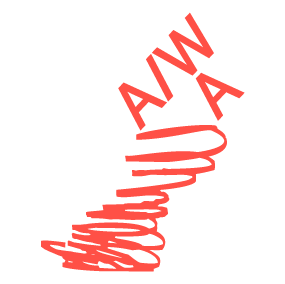
Is the cinema a defunct cultural site, and has the internet as a screen based distribution network replaced it? If so, what does this mean for the production of film and its audience? As artists and viewers alike rely less and less on the ‘public’ space of television and cinema to distribute work, the opportunity for a collective address has seemingly disappeared, as individuated timelines necessitate customised content. What could the artistic response be to this shift, perhaps via reclaiming a commodified network or modelling new ones from previously unused production values? For both responses and others, new aesthetic ideas will have to take shape and accompany such a change in circulation.
For now, join a series of screenings and group discussions about production structures, artistic activism, funding and collaboration. Taking place at Oxford House, East London, this series will initially consist of three sessions orientated around differing production and distribution models led by a range of artists and filmmakers engaged in projects for exhibition, television, cinema and internet based platforms.
Three sessions will be held, each led by two artists, filmmakers or producers in conversation, with a screening of their work at the beginning of each followed by a group discussion around themes pertinent to the projects and models used. It is a modular series, so you can pick and choose which to come to; you’re also very welcome to come to all.
Is the site of the exhibition or cinema crucial to the scale of a production i.e. its value and impact? What are the rules and transgressions in such a space, and is the benefit of working in ‘artist’ moving image simply a greater sense of autonomy/experimentation compared to TV or cinema? How can artists successfully transfer to such a popular audience without falling into the trappings of auteur conservatism or studio system politics?
Join David Panos and Matthew Noel-Tod for a discussion/screening around scale and distribution for film and video, presenting rough cuts of their own work and others.
As more and more artists distribute work via screen based networks online, what problems arise through this form of distribution? Online content is increasingly perfected by algorithms for large commodified networks to an individual, where likes and dislikes are filtered and archived to better results; how does this change the audience for film/video? In contrast, cinema employs strict rules in production to target certain social and political groups, using focus groups to determine edits, casting and production values.
Can artists formulate ideas to produce work for such a structure without creating highly customised individual content or generalised platitudes, and is this even a problem?
Join Cecile B Evans and James Bridle for a group discussion (accompanied by a screening of their work) about distribution, image production, network visibility and the Sony hack.
This discussion is the second event of the Post Cinematic Orientation season organised by Dan Ward.
James Bridle is an artist, writer, and publisher based in London, UK. His writing on literature, culture and networks has appeared in magazines and newspapers including Wired, Domus, Cabinet, the Atlantic, the New Statesman, the Guardian, the Observer and many others, in print and online. His artworks have been commissioned and exhibited worldwide and on the internet. He lectures regularly at universities, conferences and other events. His formulation of the New Aesthetic research project has spurred debate and creative work across multiple disciplines. His work can be found at http://booktwo.org.
Cécile B. Evans is a Belgian American artist based in Berlin and London. She is the 2012 recipient of the Emdash Award (now Frieze Award), and the 2013 recipient of the Push Your Art Prize, resulting in the commission of a new video work for the Palais de Tokyo (Paris). She is the creator of AGNES, the first digital commission for the Serpentine Galleries (curated by Ben Vickers), a project which has grown internationally across platforms. Recent shows include Seventeen Gallery (London), “TTTT” at Jerwood Visual Arts Foundation (London), “La Voix Humaine” at Kunstverein Munich, “Phantom Limbs” at Pilar Corrias Gallery (London), and “Desire” at Bergen Kunstmuseum.
Matthew Noel-Tod (born 1978) Selected exhibitions and screenings include: The Politics of Amnesia II, CGP London (2015), A Season in Hell 3D, Banner Repeater, London (2014) Assembly: A Survey of Recent Artists’ Film and Video in Britain 2008–2013, Tate Britain, London (2013). As a Director of Photography, Noel-Tod has worked on many artists’ films, including works by Anja Kirschner & David Panos, Melanie Gilligan, Laure Prouvost, Rachel Reupke, David Lamelas, Sturtevant, Grace Schwindt and Elizabeth Price.
David Panos is a London-based artist who produces videos, installations and music. He has frequently worked in collaboration with Anja Kirschner and they were the winners of the Jarman Award in 2011 for their long form narrative video works that use historical and cinematic material to explore the relation of art and culture to class, political economy and power. Recent solo shows include: Albert Baronian, Brussels, 2015, Liste, Basel 2014, ICA, London 2014, Neuer Berliner Kunstverein, Berlin, 2013; Secession, Vienna, 2012; Artist Space, New York, 2012; castillo/corrales, Paris, 2011; Staatsgalerie Stuttgart, Stuttgart, 2011; Kunsthall Oslo, Oslo, 2011.
